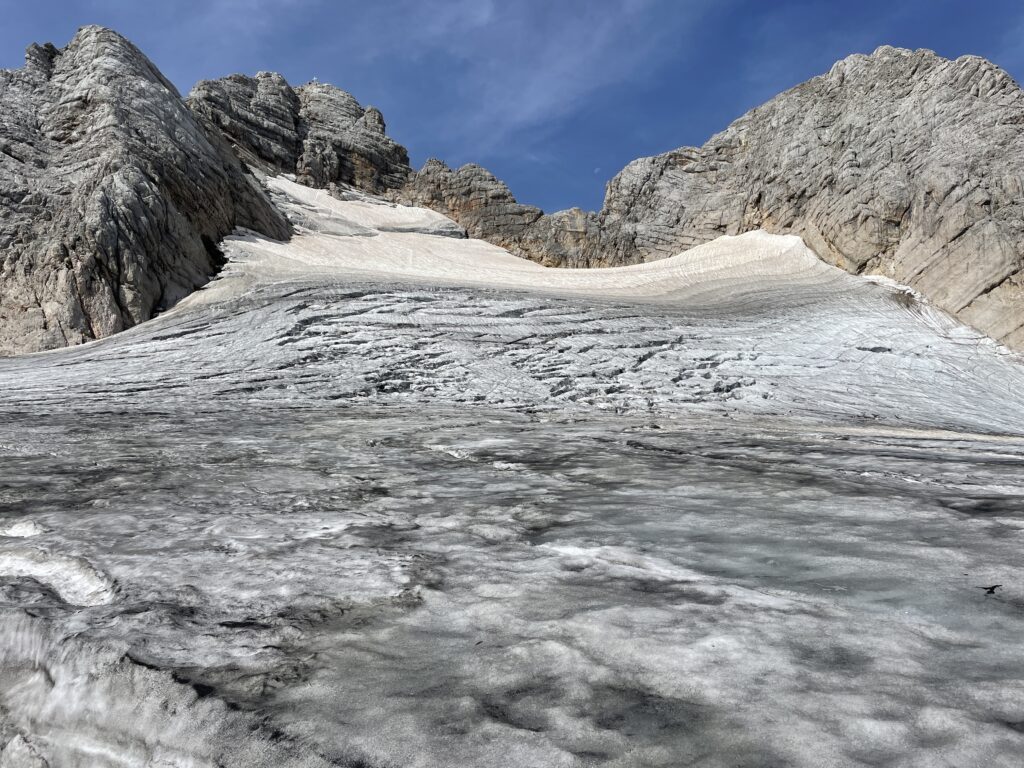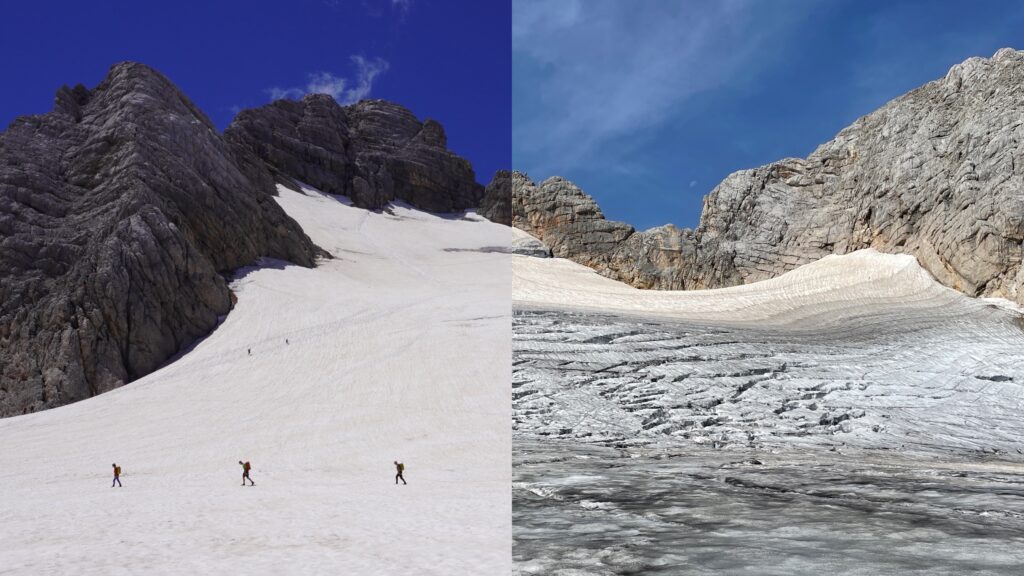A first insight into the recent changes at Dachstein Glacier. Photos from early July 2022 and mid-August 2022 are shown. Whereas in July there is still an almost completely closed snow cover on the glacier, in August the glacier is fully out of ice. Thus, the typical fenomena of a glacier from crevasses to moraines are clearly visible. The black deposits on the glacier surface are called cryoconite. This is rock debris and bacteria that have fallen onto the glacier and produce a black pigment.
The winter and spring growth of new snow is recognizably completely consumed by midsummer. The absence of snow cover leads to a vicious circle of rising temperatures and thus to an accelerated loss of ice mass via the darkening surface of the glacier: fresh snow has a high albedo, almost all the radiated energy from the sun is reflected, and temperatures at the surface and in the underlying glacier ice remain low. If the protective snow cover is missing, the darker, less reflective ice is exposed to the sun without protection, heats up, thaws and thus melts. The result is a reduction of the ice mass and thus a continuation of the glacier mass.





